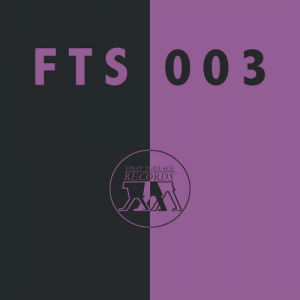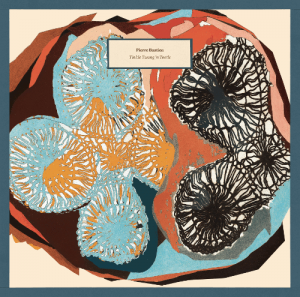 The first side of FTS003 is a gentle amalgam of mechanical whirs and snipping conjunctives. One of Pierre Bastien’s robotic creations — a specially adapted Casio that conducts a huge sound sculpture, a Mechanical Orchestra invented by Cabo San Roque in Barcelona. The hiccuping apparatus is ever-present, delicately puckering a slow pulsing organ backdrop as this trumpet sauces its sinews.
The first side of FTS003 is a gentle amalgam of mechanical whirs and snipping conjunctives. One of Pierre Bastien’s robotic creations — a specially adapted Casio that conducts a huge sound sculpture, a Mechanical Orchestra invented by Cabo San Roque in Barcelona. The hiccuping apparatus is ever-present, delicately puckering a slow pulsing organ backdrop as this trumpet sauces its sinews.
The third and final part is born out of a rolling mirage of kating kinesis, bubbling into a watery brook of glassy chimes, singing saws and what sounds like an underwater Dizzy Gillespsie coo(ing) in the cushioning softness of a chuting piston, its whistling branches tickled by feedback feathers and a shimmering fade.
The second side dives into more improv goods, this time from a collective called Winkhaus, comprising Anna Homler, Adrian Northover and Dave Tucker, a trio who fill your ears with unusual flavours, whispering nocturnes seeded with vocal abstractions or what sounds at times like Japanese. Touches of late-night jazz intermingle in a dark and fragmentary pleasure that shimmers, stipples or floats out on an eerie snakeskin of sustain, some of the sax work like diseased lungs struggling for breath, their raspy offsets combing the curling orbits, wrapping themselves round the toy-like stutters that compliment the first side’s tickling clockworks so perfectly. The textural closeness of “Green Steam-Curious Weather”’s wounded sporadics, its vocal wows running along a reverberating pluck of double bass or the syrupy Japanese floating round “Minaru”’s loose-strung strums, these are sounds to be absorbed by, full of mysterious shapes you can’t help but revisit.Tinkle Twang ‘n Tootle
Marionette
 Tinkle Twang’n Tootle has Mr Bastien all to itself, and plys a souk of subdued rhythms, odd mechanical concoctions comprised of the half-broken and detuned as the loopage falls through in dreamy melody, “Smart Lilt Rams”‘ racketed reverb, chorusing trumpet and conversatory horn beeps frolicking Frankenstein-like, tumbling your ear in a jigsawing joy.
Tinkle Twang’n Tootle has Mr Bastien all to itself, and plys a souk of subdued rhythms, odd mechanical concoctions comprised of the half-broken and detuned as the loopage falls through in dreamy melody, “Smart Lilt Rams”‘ racketed reverb, chorusing trumpet and conversatory horn beeps frolicking Frankenstein-like, tumbling your ear in a jigsawing joy.
Each track is a fresh microcosm eating away at your stress-filled cul-de-sacs, as Bastien’s imagination burns up on the blues-like tapers of “May Yam / Wedded Dew”, percussively weaseling the wind-up clank of plastic teeth. Malian-like vibes dribbling into a lovely ambient backwash of pan-piped church organ as the close mic(ed) brush of spindling arms curves out on this underwater bubble gun of ragtime melody, spookily reminiscent of “Élisa” off Jane Birkin’s Arabesque.
The lovely Pram-like xylo-folics and glinting keyboards of “Pet Step” follow, its pebbling nature blurred in frog-croak and snorting pig, while the show-boating soft melancholics of the last track, “Don’s Nod”, are a blown burlesque sundown that leaves a pleasing smile in your head.-Michael Rodham-Heaps-



